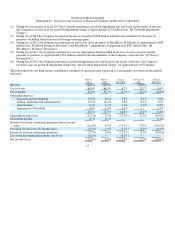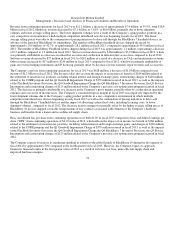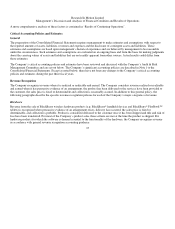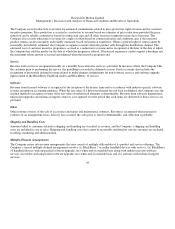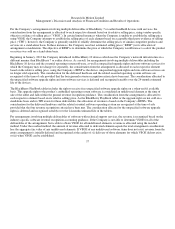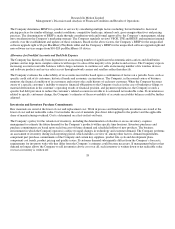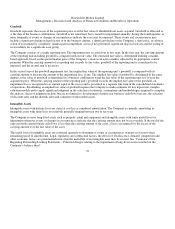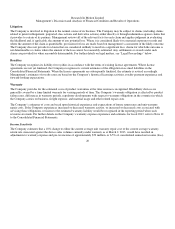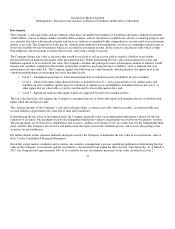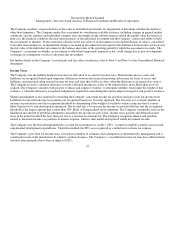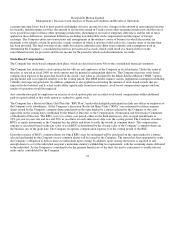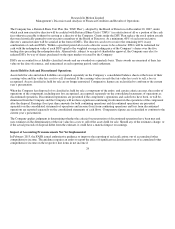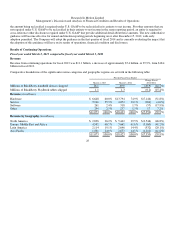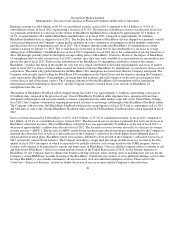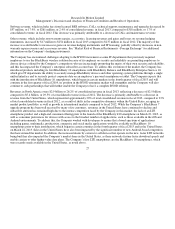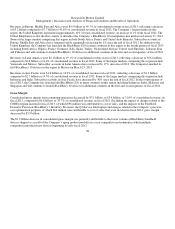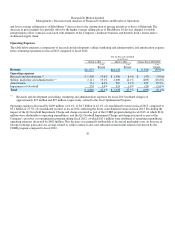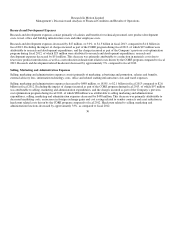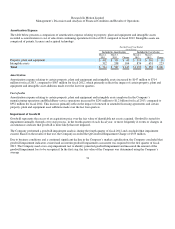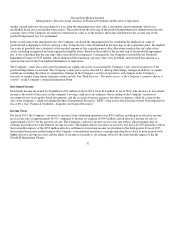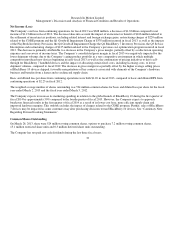Blackberry 2013 Annual Report Download - page 188
Download and view the complete annual report
Please find page 188 of the 2013 Blackberry annual report below. You can navigate through the pages in the report by either clicking on the pages listed below, or by using the keyword search tool below to find specific information within the annual report.
Research In Motion Limited
Management’s Discussion and Analysis of Financial Condition and Results of Operations
carrying operating losses back to prior periods with higher effective income tax rates, changes in the amount of unrecognized income
tax benefits, manufacturing activities, the amount of net income earned in Canada versus other operating jurisdictions and the rate of
taxes payable in respect of those other operating jurisdictions, the timing of reversal of temporary differences and the rate of taxes
applied on these differences, permanent differences including non-deductible stock compensation and the impact of foreign
exchange. The Company enters into transactions and arrangements in the ordinary course of business in which the income tax
treatment is not entirely certain. In particular, certain countries in which it operates could seek to tax a greater share of income than
has been provided. The final outcome of any audits by taxation authorities may differ from estimates and assumptions used in
determining the Company’s consolidated income tax provision and accruals, which could result in a material effect on the
consolidated income tax provision and the net income for the period in which such determinations are made.
Stock-Based Compensation
The Company has stock-based compensation plans, which are described in note 9(b) to the consolidated financial statements.
The Company has an incentive stock option plan for officers and employees of the Company or its subsidiaries. Under the terms of
the plan, as revised in fiscal 2008, no stock options may be granted to independent directors. The Company measures stock-based
compensation expense at the grant date based on the award’s fair value as calculated by the Black-Scholes-Merton (“BSM”) option-
pricing model and is recognized rateably over the vesting period. The BSM model requires various judgmental assumptions including
volatility and expected option life. In addition, judgment is also applied in estimating the amount of stoc
k
-based awards that are
expected to be forfeited, and if actual results differ significantly from these estimates, stock-based compensation expense and our
results of operations would be impacted.
Any consideration paid by employees on exercise of stock options plus any recorded stock-based compensation within additional
paid-in capital related to that stock option is credited to capital stock.
The Company has a Restricted Share Unit Plan (the “RSU Plan”) under which eligible participants include any officer or employee of
the Company or its subsidiaries. At the Company’s discretion, Restricted Share Units (“RSUs”) are redeemed for either common
shares issued by the Company, common shares purchased on the open market by a trustee selected by the Company or the cash
equivalent on the vesting dates established by the Board of Directors or the Compensation, Nomination and Governance Committee
of the Board of Directors. The RSUs vest over a three-year period, either on the third anniversary date, in equal installments or
25% per year in years one and two and 50% in year three on each anniversary date over the vesting period. The Company classifies
RSUs as equity instruments as the Company has the ability and intent to settle the awards in common shares. The compensation
expense is calculated based on the fair value of each RSU as determined by the closing value of the Company’s common shares on
the business day of the grant date. The Company recognizes compensation expense over the vesting period of the RSU.
Upon the issuance of RSUs, common shares for which RSUs may be exchanged will be purchased on the open market by a trustee
selected and funded by the Company or new common shares will be issued by the Company. The trustee has been appointed to settle
the Company’s obligation to deliver shares to individuals upon vesting. In addition, upon vesting, the trustee is required to sell
enough shares to cover the individual recipient’s minimum statutory withholding tax requirement, with the remaining shares delivered
to the individual. As the Company is considered to be the primary beneficiary of the trust, the trust is considered a variable interest
entity and is consolidated by the Company.
23


